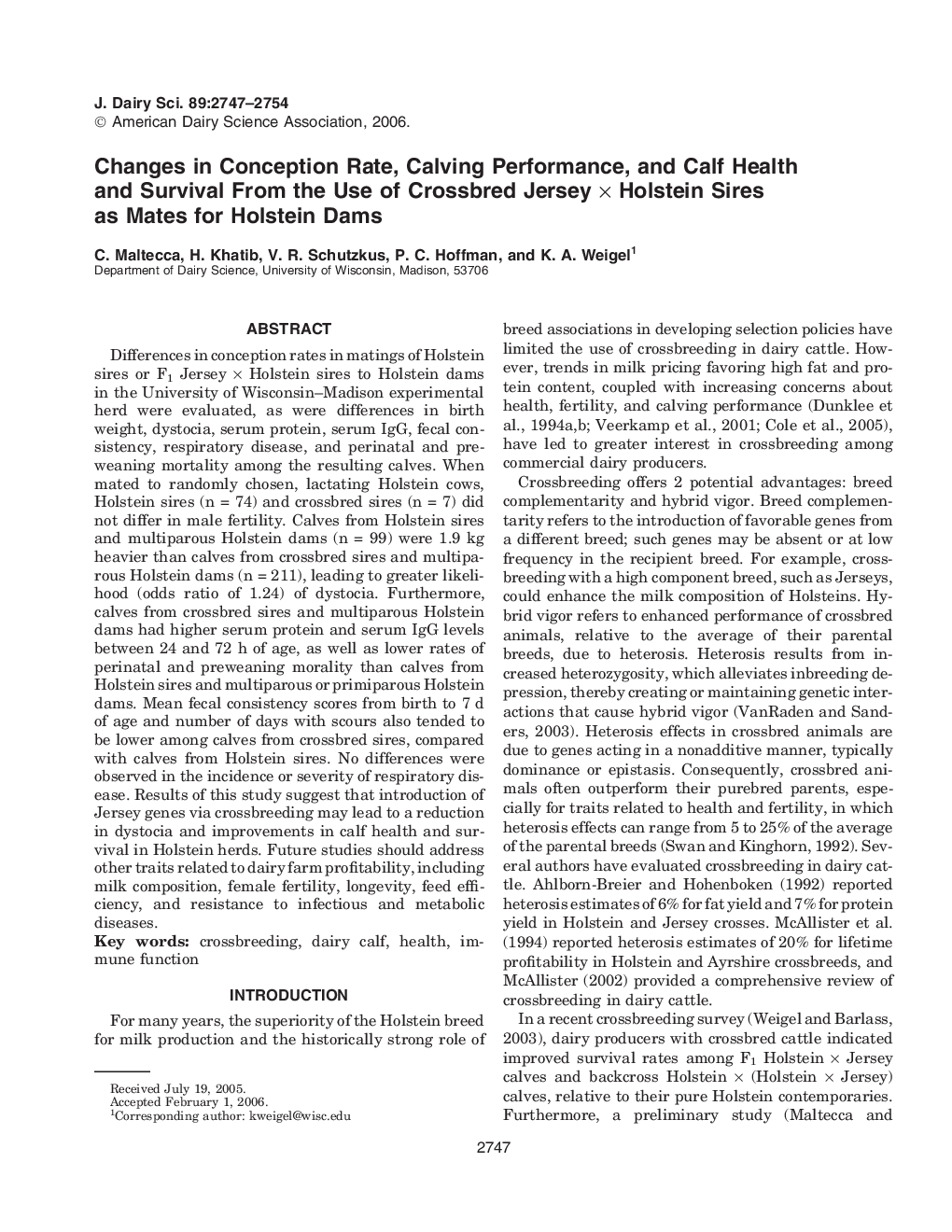| Article ID | Journal | Published Year | Pages | File Type |
|---|---|---|---|---|
| 2441386 | Journal of Dairy Science | 2006 | 8 Pages |
Abstract
Differences in conception rates in matings of Holstein sires or F1 Jersey Ã Holstein sires to Holstein dams in the University of Wisconsin-Madison experimental herd were evaluated, as were differences in birth weight, dystocia, serum protein, serum IgG, fecal consistency, respiratory disease, and perinatal and pre-weaning mortality among the resulting calves. When mated to randomly chosen, lactating Holstein cows, Holstein sires (n = 74) and crossbred sires (n = 7) did not differ in male fertility. Calves from Holstein sires and multiparous Holstein dams (n = 99) were 1.9 kg heavier than calves from crossbred sires and multiparous Holstein dams (n = 211), leading to greater likelihood (odds ratio of 1.24) of dystocia. Furthermore, calves from crossbred sires and multiparous Holstein dams had higher serum protein and serum IgG levels between 24 and 72 h of age, as well as lower rates of perinatal and preweaning morality than calves from Holstein sires and multiparous or primiparous Holstein dams. Mean fecal consistency scores from birth to 7 d of age and number of days with scours also tended to be lower among calves from crossbred sires, compared with calves from Holstein sires. No differences were observed in the incidence or severity of respiratory disease. Results of this study suggest that introduction of Jersey genes via crossbreeding may lead to a reduction in dystocia and improvements in calf health and survival in Holstein herds. Future studies should address other traits related to dairy farm profitability, including milk composition, female fertility, longevity, feed efficiency, and resistance to infectious and metabolic diseases.
Related Topics
Life Sciences
Agricultural and Biological Sciences
Animal Science and Zoology
Authors
C. Maltecca, H. Khatib, V.R. Schutzkus, P.C. Hoffman, K.A. Weigel,
